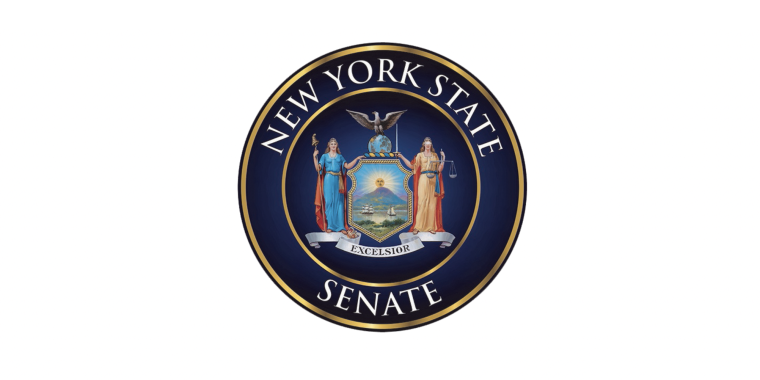
Testimony Before The MTA Regarding The Proposed Fare Increase, Service Cuts, And Token Booth Closings on February 5, 2003
Liz Krueger
July 12, 2010
My name is Liz Krueger, and I am the State Senator for the 26th District on the East Side of Manhattan. I am testifying today to express my grave concern over two overlapping measures the MTA has publicly proposed—a fare hike with cuts in service, and the closure of 177 token booths.
The last decade has represented a remarkable turnaround in transportation trends, as ridership on subways and buses have risen dramatically. The MTA focused on enhancing service reliability and personal safety, spending public investments on new subway cars and buses, track replacement and station renovations. New Yorkers responded by embracing public transportation, with subway ridership increasing 34% and bus ridership increasing 27% in the 1990s. This development has been wonderful for the economy, environment, and quality of life for all New Yorkers. I fear that with a fare hike and the closure of 24% of its token booths, the MTA is on the verge of enacting two counterproductive measures that would significantly set back public transportation. It is clear that the MTA has not been able to accommodate the unprecedented influx of riders, as the amount of service has not increased at the same rate as ridership. For this reason, more than ever, New Yorkers desperately need a Second Avenue subway, an increase in the frequency of service, and a more efficient bus system. Instead, the MTA is presenting the riding public with a "pay more for less service and safety" scenario that will do tremendous damage to New York City.
It is understandable that residents of New York City are resistant to a fare hike. The MTA calls on city subway and bus riders to pay a disproportionate share of the cost of public transportation compared to non-city riders. New York City accounts for 84% of all state riders moved by some form of mass transit, New York City buses and subways receive only 63% of state transit aid. The MTA must do everything possible to provide an affordable means for workers and visitors to get around. For this reason, New Yorkers need to understand to what degree a fare increase is necessary to solve the MTA’s fiscal problems. Unfortunately, because of legitimate and unanswered questions regarding the operation, management, and accountability of MTA-NYCT, the MTA has failed to make a convincing case for a fare hike.
The inquiries into the MTA’s finances are justified for many reasons. Until late last year, the MTA was projecting a large surplus, and one-shot cash infusions provided by the State were intended to ensure that growing debt would not result in a fare increase. A report prepared by the TWU, with the use of NYCT statistics, states that ridership has surged from 1.7 billion to 2.3 billion in the last seven years, while the MTA’s operating costs have decreased by $43 million as of September 2002. In addition, the Independent Budget Office reported that the total budget shortfall over the next two years is actually $951 million, rather than the $2.8 billion announced by the MTA. Earlier this week, the MTA again revised its projected deficit downward.
Transit advocacy groups and elected officials have called upon the MTA to shed light on its finances and share with the public data that demonstrates the agency’s projected budget deficit. However, as expressed by both Comptroller Thompson and the IBO, the MTA has ultimately failed to provide adequate details and appropriate disclosure to allow for true public debate. I have cosponsored a bill in the State Senate, introduced by Senate Democratic Leader David Paterson, that would require better reporting of financial data by the MTA. While we are aware of the MTA’s explanation for their budget gap, the lack of transparency and disclosure makes it impossible for the public to conduct an adequate evaluation of the need for a fare hike.
I am also discouraged that MTA officials repeatedly insist that they have "limited tools" in addressing their deficit; specifically referring to service reductions and a fare increase. The MTA is seemingly ignoring alternative proposals such as Bus Rapid Transit (BRT). BRT is a program proposed by TWU and bolstered by a report prepared by Schaller Consulting, that would enhance the speed and reliability of bus transportation while saving the MTA up to $300 million per year. Similar systems have been successfully implemented in cities across the world. Since the MTA’s own surveys convey that New York City’s bus service has remained slow and crowded, I am surprised that the MTA has not taken this cost-saving proposal more seriously.
In addition, the MTA relies on outside contractors for the ongoing rebuilding and replacement of MTA facilities and infrastructure. It has been demonstrated that these contractors often cost more money, take longer, and do poorer quality work than NYC Transit employees. I hope the MTA will reconsider its contracting policies and allow more work to be completed in-house. The MTA must closely examine alternative proposals that would potentially benefit both riders and the TA’s fiscal situation.
Finally, I am perhaps most disturbed by the MTA’s plan to close 177 subway token booths. According to Lawrence Reuter, the decision is justified by the transition to the MetroCard, which has effectively reduced reliance on token booths as the primary means of purchasing fare instruments. The MTA fails to recognize both that New Yorkers don’t simply want token booths in order to buy tokens, and that the men and women who collect fares are essential to rider safety and convenience. As I mentioned previously, increased passenger safety has been one of the primary reasons for the recent success of the MTA in attracting more riders. The elimination of 24% of its token booths will make unstaffed entrances far more dangerous. Station agents assigned to booths are a lifeline for passengers in distress. Not only are they an important deterrent to crime, but they provide reliable emergency communication. Every year, station agents activate their "emergency booth communication system" more than 60,000 times, obtaining police or emergency medical technicians.
In addition, a large portion of the riding public is unable to use the High Entry/Exit Turnstiles that the MTA wants to replace station agents with. This is a critical problem, as fare booth operators help customers with limited mobility, vision, or other disabilities, not to mention people with strollers and large packages. The elimination of these token booths would represent a step backward in the long fight to make subways more accessible to people with disabilities. Station agents also provide us with directions, tell us how serious a delay may be, and dispense "block tickets," which allow riders to re-enter the system if there is a major delay or system blockage.
It is evident that the MTA has not carefully thought through their proposals. Some of the booths the MTA wishes to close lie across busy thoroughfares, and are sometimes two or three blocks away from the closest open booth at the same station. In addition, it is my understanding that if token booths were eliminated, MTA is planning on transforming token booth clerks into roaming station agents. Assigning station agents to stations without booths puts the station agent in danger, and is a disservice to the riding public as well. The station agents will be difficult to locate, defenseless against a crime, and ill equipped to respond to an emergency.
In conclusion, I want to reiterate that this proposed fare hike constitutes a regressive tax on working New Yorkers. By avoiding the options of personal and corporate income tax increases, Governor Pataki is shifting the burden of closing the State’s budget gap to the New Yorkers who can least afford it—an increase in subway and bus fares is just one appalling example. In the event of a fare increase, or in any event for that matter, the MTA must restructure its fare packages to make fare discounts more accessible to low-income riders. The current discounts are fundamentally inequitable, as they are only affordable to, and primarily purchased by, middle and upper-income riders. The MTA should explore unlimited ride passes that could be used on nonconsecutive days, offer bi-weekly unlimited ride passes, and other proposals that promote a more equitable fare structure.
This is a critical moment for the future of mass transit in New York City. Through capital investments, the MTA has effectively focused on the reliability, convenience and safety of the transit system, achieving results and setting itself on a positive trajectory. Service cuts, token booth closures, and a fare hike are a formula for disaster, and the direct economic and environmental consequences are daunting. The decisions we make now will determine if our mass transit system continues to move forward and meet the needs of New Yorkers, or if it regresses and again becomes perceived as a dangerous and unreliable mode of transportation.
Share this Article or Press Release
Newsroom
Go to NewsroomSenator Krueger's June 2025 Update
June 25, 2025

Sen. Krueger's Summer No Fee Activities Guide for 2025
June 24, 2025

